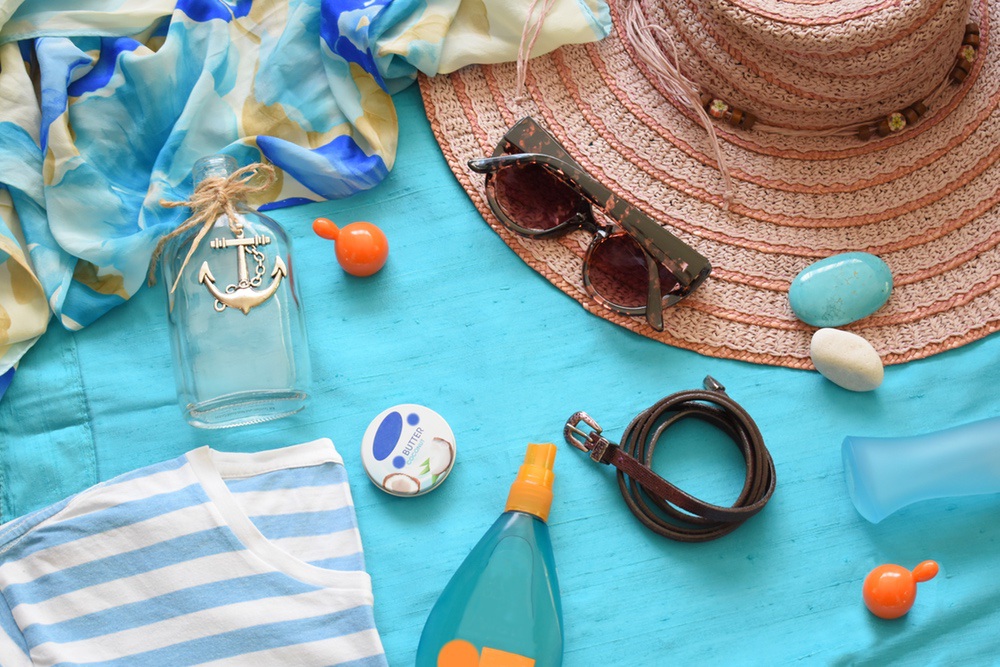For past decades, dermatologists have cautioned individuals to avoid exposure of their skin to the sun. Nevertheless, many of us who swarmed to “the art of sunbathing” in our youths with the desire to look healthier, now find it difficult to break old habits. I, myself, know that outdoor swimming daily can be a most pleasurable experience, in spite of my three scary experiences with skin cancer. For the huge population of Sun City/Huntley, “outdoor water babies,” softball team members, golfers, tennis players, pickleball enthusiasts, hikers, and joggers, I write this article educating all of us as to the researched correct amount and correct strength of sunscreen to one’s body. And if you are already tan and don’t think that you need to apply skin protection, think again. A tan is your body’s response to being already injured by ultraviolet rays (UV) exposure. Your tan does not protect you from future exposures. In fact, wearing a white shirt gives you a sun protection factor of SPF 7. In comparison, a tan only gives you SPF 4 protection.
Wall Street Journal’s 2018 article titled “Burning Question: How Much Sunscreen?” explains that “Lotions, foams and sprays that prevent sunburn are tested at 2 milligrams per square centimeter of skin (one fifth the depth of a sheet of paper) to determine the sun protection factor or SPF.” While that amount does give the best results, most dermatologists have trouble explaining just how much to lather on our bodies. As a result, most of us do not use a correct amount of protection. Dr. David Leffell, a Yale University chief of dermatologic surgery, tells us that a rule of thumb is using a shot glass full of sunscreen, but the same amount probably won’t work the same on a person who is 5 feet 2 inches as it would on someone of 6 feet 3 stature. The Food and Drug Administration (FDA), who regulates sunscreen products, agrees with the doctor.
“The amount of sunscreen applied for each consumer will be based on their specific attributes including body size, the amount of body hair, and sensitivity to the sun,” the FDA adds.
Most outdoor activists probably only apply 20 to 50% of the amount needed to obtain the labeled SPF, according to studies performed in the U.S., Denmark, and Australia. Less sunscreen, of course, means less protection. To ensure proper coverage, some researchers, including Johnson & Johnson (maker of sun protection products) recommend applying sunscreen twice daily; this is especially true of anyone entering and leaving an outdoor swimming area. Other research has changed the shot glass rule into a teaspoon rule. It explains, “Use more than half a teaspoon for each arm or the face and neck, and more than one teaspoon for each leg, the chest, and the back for a total of about 6 teaspoons, or 1 fluid ounce (a shot glass holds 1.5 fluid ounces).”
In May, the Journal of the American Academy of Dermatology (AAD) stated that, despite lab tests to the contrary, using sunscreens with an SPF rating of 50 or greater is more than sufficient to prevent skin burns. In a lab setting, SPF 50 sunscreen filters out 98% of UVB rays. UVB rays lead to the burning of the skin. Higher SPFs, in the same setting, prove not to be necessary, according to these scientists. For instance, the AAD discovered that SPF 60 filters out almost the same percentage of about 98.3% of UVB rays. But Johnson & Johnson’s trial using the SPF 100 sunscreen on snow skiers did find that after 6 hours of only a 1.1 application, the stronger SPF 100 protection produced less reddening on their users’ exposed skin than the SPF 50 users’ exposed skin.
The Yale dermatology surgeon sums up the controversial findings in advising applicants to use common sense: “Apply enough and massage it in so there is no residue left.” He continues “If you find you’re still getting pink after a couple of hours or depending on your skin type, an hour in the sun, you need to put on more.”






4 Comments
I can see that your website probably doesn’t have much traffic.
Your articles are awesome, you only need more new visitors.
I know a method that can cause a viral effect on your website.
Search in google: dracko’s tricks make your content go viral
Hello. I see that you don’t update your page too often. I know that writing content is boring
and time consuming. But did you know that there is a tool that allows you to create new posts
using existing content (from article directories or other pages from your niche)?
And it does it very well. The new posts are high quality and pass the copyscape test.
You should try miftolo’s tools
What a stuff of un-ambiguity and preserveness of precious experience regarding unpredicted emotions.
It’s appropriate time to make a few plans for the long run and it is time to be happy. I’ve learn this post and if I may just I desire to recommend you some attention-grabbing issues or advice. Maybe you can write subsequent articles relating to this article. I want to learn even more issues about it!